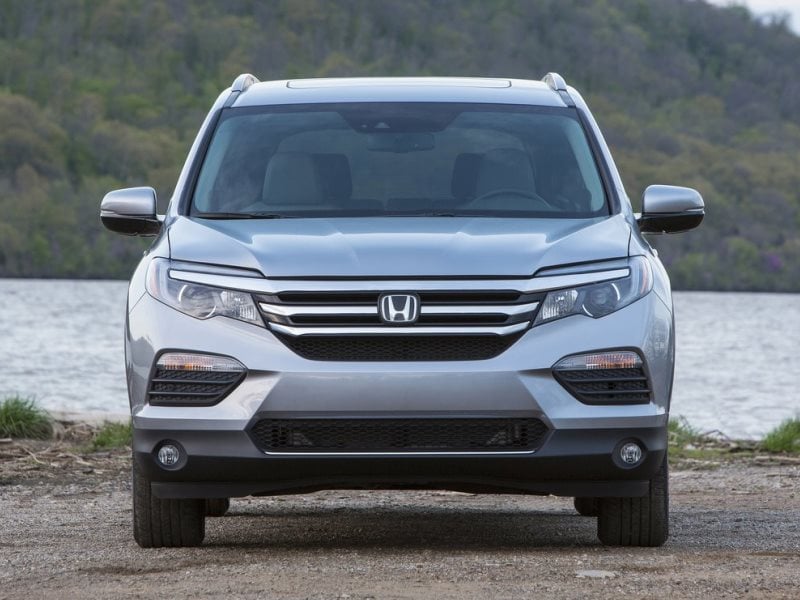Recent Articles
Popular Makes
Body Types
2016 Honda Pilot Road Test & Review
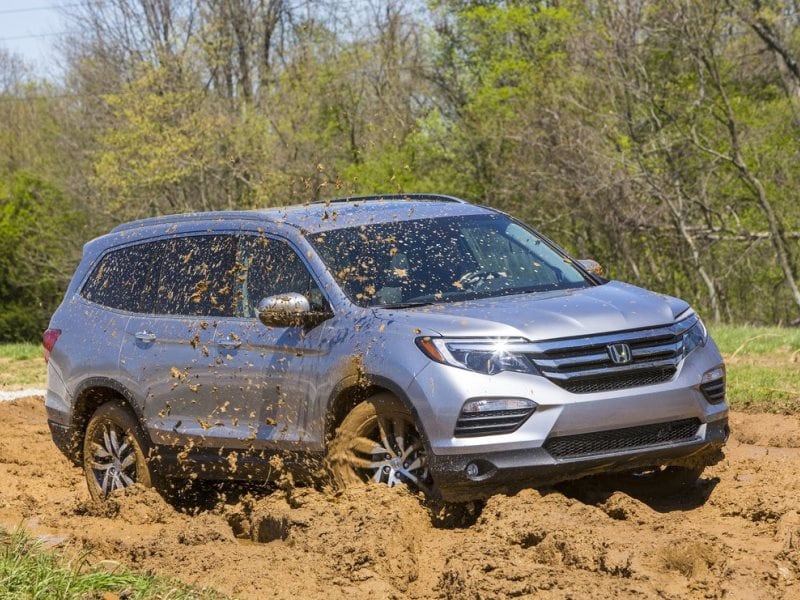
The aptly named Honda Pilot owns the distinction of being the first three-row mainstream sport utility vehicle to be developed on a unit-body car-based platform. Ushering in a new degree of comfort and drivability in the SUV marketplace, the Pilot was the first mid-size non-luxury sport utility to drive like a car. Indeed, when the 2003 Honda Pilot debuted, it was praised for its comfort, ease of handling, and solid build quality. For the 2016 model year, Honda has introduced the third generation Pilot.
An all-new take on a now familiar theme, the 2016 Honda Pilot is basically more of everything some 1.4-million American Pilot customers have bought into for more than a decade and counting. Enjoying one of the highest customer loyalty rates in the industry, the 2016 Honda Pilot comes to the fore with more comfort, more space, more luxury, more power, more safety, and more fuel-efficiency.
Designed, refined, and built in the United States, the 2016 Honda Pilot features an all-new look, and plausible seating for up to eight people in a more family-friendly package. There is also a new range topping model offering so many features it could well have been an Acura.
Models & Pricing
For the 2016 model year, Honda is offering the all-new Pilot in five states of trim. With pricing starting at $29,995, the trim levels are LX, EX, EX-L, Touring and the new Elite trim package. Standard LX features include 18-inch alloy wheels, air conditioning, cruise control, active noise cancellation, a 60/40 split folding third row, a seven-speaker audio system and a rearview camera, as well as Bluetooth audio and telephone connectivity.
The $32,430 Pilot EX adds automatic headlights, foglights, LED daytime running lights, heated exterior side view mirrors, keyless entry and ignition, Honda’s LaneWatch blind spot camera system, tri-zone automatic climate control, a power adjustable driver seat, an eight-inch touchscreen monitor, satellite radio, and Pandora Internet radio.
At $35,905, the 2016 Honda Pilot EX-L adds leather upholstery, a sunroof, a power actuated rear hatch, a sliding function for the second row to ease access to the third row, a power adjustable front passenger seat, front seat heaters, and an auto-dimming rear view mirror.
Starting at $41,020, the 2016 Honda Pilot Touring adds roof rails, a nine-speed automatic transmission, auto engine stop/start, front and rear parking sensor arrays, sunshades for the second row passengers, smart cruise control, forward collision mitigation, road departure intervention, lane departure warning and intervention, navigation, and rear-seat entertainment.
The fully loaded Pilot Elite starts at $46,420, and adds to all of the above; 20-inch wheels, LED headlights with an automatic high-beam function, blind spot monitoring with rear cross traffic alert (supplanting the LaneWatch system), rain-sensing windshield wipers, panoramic sunroof, ventilated front seats, heated second-row captain chairs, a heated steering wheel, and high-def radio.
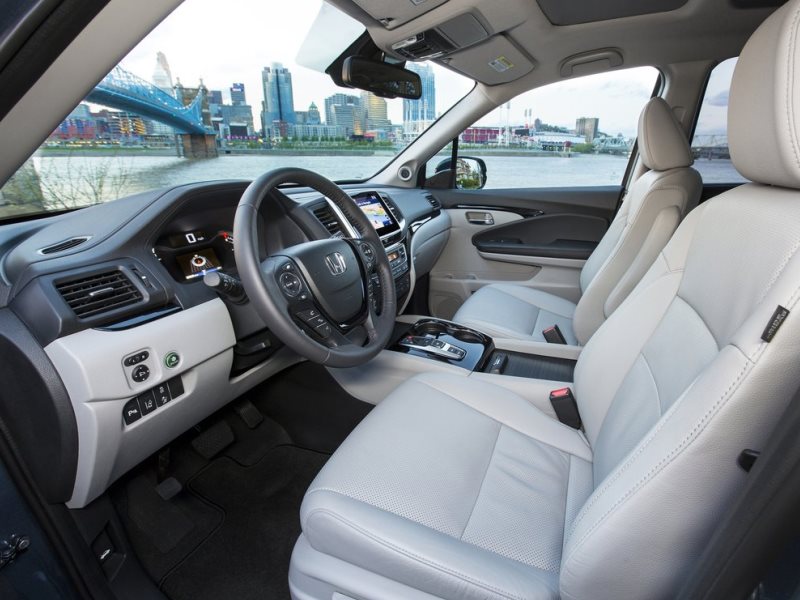
Design
For the 2016 model year, the look of the Honda Pilot eschews the traditional SUV profile in favor of the more contemporary crossover suv look many vehicles in this segment have adopted. This brings the styling of Pilot more in line with CR-V and the new HR-V. Actually, from some angles, Pilot resembles a minivan with a raised ride height. Of course, given the fact Pilot, Accord and Odyssey all ride on the same platform, it can (quite accurately) be said Pilot definitely got some Odyssey in it.
Still, the new look is muscular while adopting a sleekness of profile heretofore untapped by the Honda Pilot. This is directly attributable to the slightly narrower body, which is also longer and lower than the outgoing Pilot’s. Extensive wind tunnel testing has led to a markedly chiseled look with strongly definitive character lines.
Upscale features such as LED taillights, optional LED headlights (a first for Honda) and daytime running lights add to the premium look of Honda’s new mid-size crossover SUV. Other styling nods toward the spendy end of the spectrum include 20-inch wheels and the new panoramic sunroof. The redesigned tailgate incorporates fixed rear glass for a lighter and simpler design.
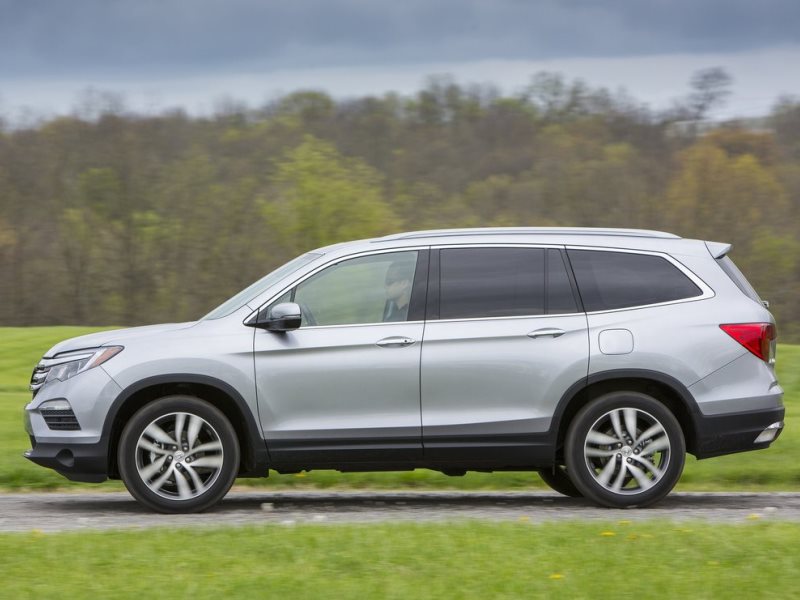
Features & Controls
All new from a blank screen, the 2016 Honda Pilot’s interior is more family friendly than ever before. It is also more refined than any previous Pilot’s passenger compartment. Adding to this impression is the preponderance of soft-touch materials liberally applied throughout the cabin. The new instrumentation solution is more readily legible, thanks to its high-contrast approach. The touchscreen now measures eight inches for easier usability. LED accent lighting in the first and second row adds a touch of upper-class chic to the mainstream segment.
Features available on Pilot for the 2016 model year include a one-touch moonroof, a panoramic glass roof, LED ambient lighting, a two-position reversible rear hatch, keyless entry and pushbutton start, heated and ventilated front seats, captain chairs for the second row, Pandora integration, text message functionality, the HondaLink connected car system, a BluRay-based DVD entertainment system, and an eight-inch touchscreen with Android compatibility.
Happily, all of these features are incorporated within a thoughtfully ergonomic design. While instantly recognizable as a Honda, it is also at once completely fresh. The transmission controls are operated via pushbutton on the center console. These are flanked by a pair of inset cupholders. On models so equipped, the eight-inch touchscreen is the focal point of the dash, supported nicely by the design of the automatic climate control system. While we do prefer actual knobs for tuning the audio system and controlling the volume level, we have to admit the look is exceptionally clean.
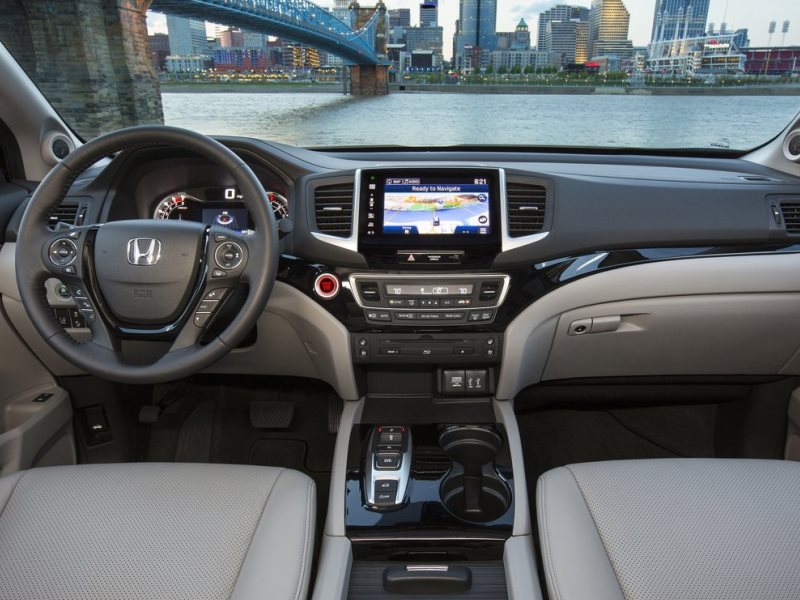
Comfort & Cargo
Repackaging the interior allowed for a lower floor, easing ingress and egress considerably. One of the benefits of the panoramic roof is the airiness of the cabin when the shade is open. Motorized, it can be opened or closed at the touch of a button.
The second row captain chairs—while they do cost you a seat—have the benefit of keeping siblings separated. (Thus freeing you from constantly hearing, “MO-OM! He keeps touching meeee!!!!”) However, even with the traditional second row seat, access to the third row is eased with the adoption of a one-touch second row (on EX-L trimmed Pilots and higher).
With remote start, the Pilot’s interior can be pre-conditioned before you take occupancy. In the summer it can be cooled, and in winter it can warmed before you get in. If you start the Pilot remotely and fail to open the driver’s door within 10 minutes, the engine shuts down.
The larger dimensions of the 2016 Honda Pilot were employed where they could be felt most—inside the vehicle. You’ll find more passenger space in every seating position. Further, maximum cargo capacity is a very generous 83.9 cubic feet. Additionally, the Pilot has a myriad of storage cubbies and more cupholders than it does seats (for some inexplicable reason).
Always the innovators, Honda fitted Pilot with a removable panel on the floor behind the third row seat. Left in place, it creates a flat load floor when the seats are folded. Removed, it makes for a deeper cargo compartment when the seats are deployed.
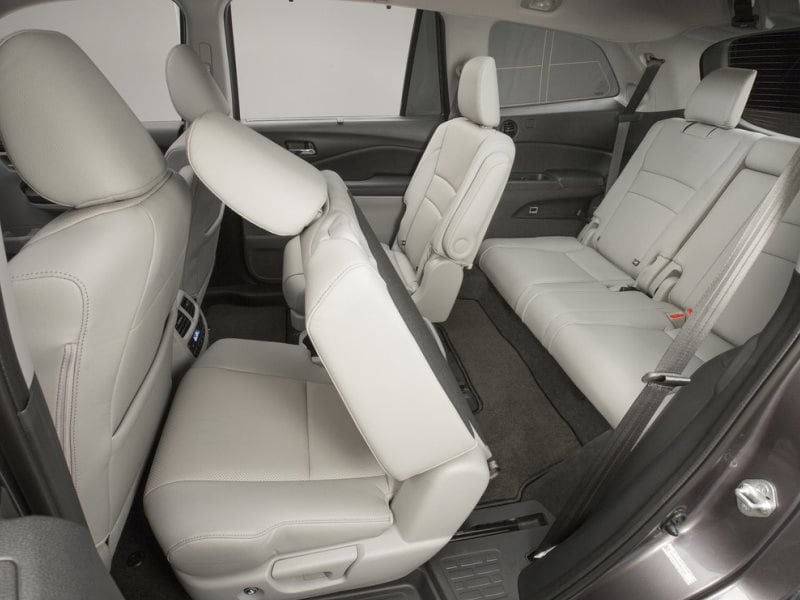
Safety & Ratings
Named a Top Safety Pick + by the Insurance Institute for Highway Safety’s Highway Loss Data Institute, the 2016 Honda Pilot scored top marks (“Good”) in all categories. These include small overlap front, moderate overlap front, and side crashworthiness. The Pilot’s roof strength, as well as its head restraints and seats got the highest rankings as well.
Incorporating the latest frontal crash prevention technologies—forward collision warning, a forward collision mitigation system with automatic braking, road departure intervention, and lane departure warning and intervention systems—pushed Pilot over the top into the “+” category.
Other standard safety features include antilock brakes, traction and stability control, front side airbags, side curtain airbags and a rearview camera. Optional features include the Honda LaneWatch blind-spot camera, front and rear parking sensor arrays, and the aforementioned collision avoidance systems.
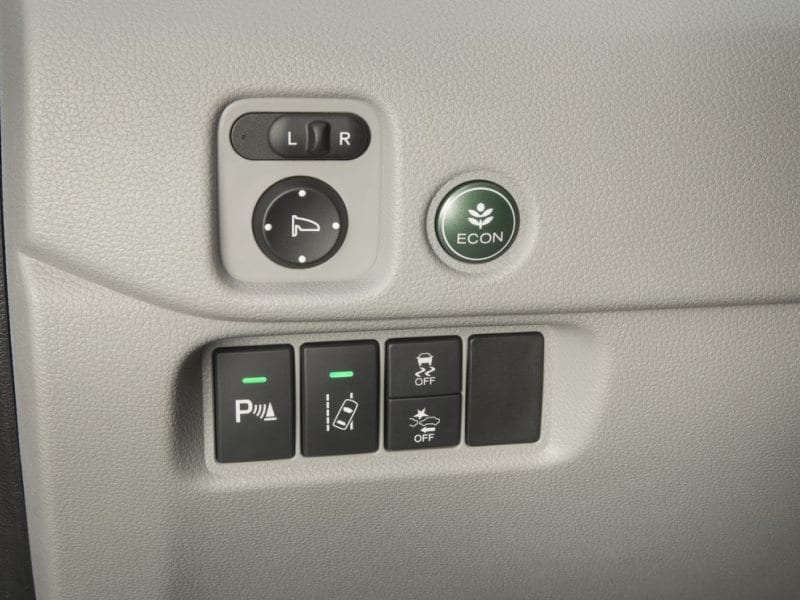
Engines & Fuel Economy
The 2016 Honda Pilot gets a new direct-injected 3.5-liter V6 with 280 horsepower and 262 ft-lbs of torque. The more basic models get a six-speed automatic transmission, while the Touring and Elite trimmed models get a nine-speed automatic. Along with the nine-speed transmission, comes automatic engine stop/start to help boost gas mileage.
Compared to the outgoing engine, the 2016 Honda Pilot enjoys a 30-horsepower bump in output, an additional nine ft-lbs of peak torque, and more readily accessible torque across the entire rev range. This means the engine is more tractable and pulls more strongly at low speeds.
Front wheel drive completes the standard powertrain, while all-wheel drive is offered as an option. The AWD system incorporates Honda’s new Intelligent Variable Torque Management with dynamic torque vectoring capabilities, and a new Intelligent Traction Management system. Further, the system is both considerably lighter than the one it replaces, and engineered to generate less friction.
The result is 19 miles per gallon in the city, 26 on the highway, and 22-combined when all-wheel drive is paired with the nine-speed transmission. Amazingly, with front-drive and the six-speed transmission, Pilot returns the same figures both in the city and combined. It picks up one mpg on the highway.
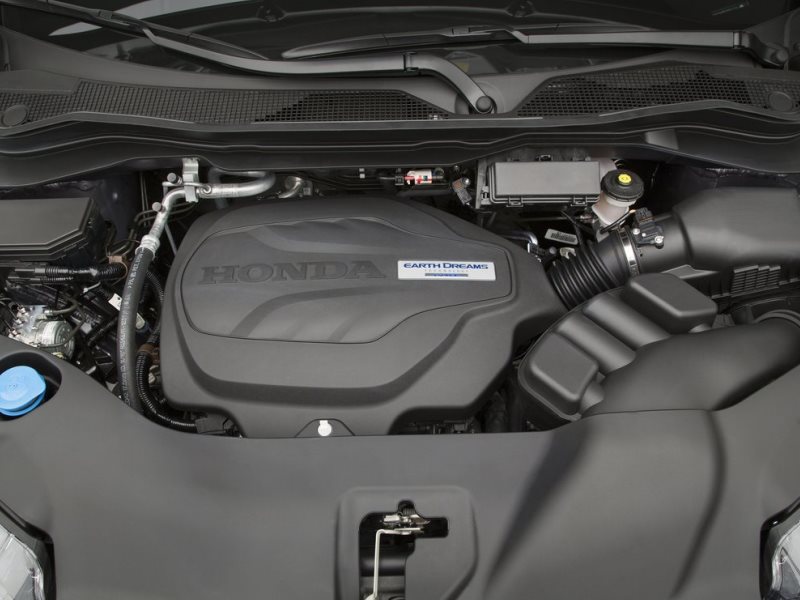
Driving Impressions
Another benefit of the new design; the body is considerably stiffer than the one it replaces. This, in conjunction with the more powerful engine and approximately 300 pounds less weight, give the third-generation Honda Pilot a decided performance advantage over its predecessors. The 2016 Pilot accelerates more sharply, handles more adroitly, and is considerably faster than the 2015 model.
With less weight, it feels much lighter on its feet and responds more readily to all driver inputs. This is most noticeable in the steering. While it’s a stretch to compare the Pilot to say an Acura ILX, when stacked against its rivals in the mid-size crossover SUV category, it does feel more like a sport sedan than a sport utility.
Another feature strongly benefitting the handling of the 2016 Honda Pilot is the torque-vectoring all-wheel drive system. With it, you can keep your foot in the throttle as you negotiate turns and the system actually apportions torque to whichever specific wheel it needs to get you through the corner with serene confidence and control.
Ride quality is smooth, compliant, and the interior ambiance remains acceptably quiet—even when driving over concrete surfaces. While the 2016 Pilot does an admirable job of soaking up pavement irregularities, it also manages to corner with minimal body roll. Both transmissions offer smooth shifting, although, as you might imagine, the six-speed is somewhat busier than the nine-speed, particularly when strong acceleration is requested. This, of course, results in more engine noise—but the 3.5-liter V6 winds smoothly, is mellifluous in tone, and is quite satisfying to push.
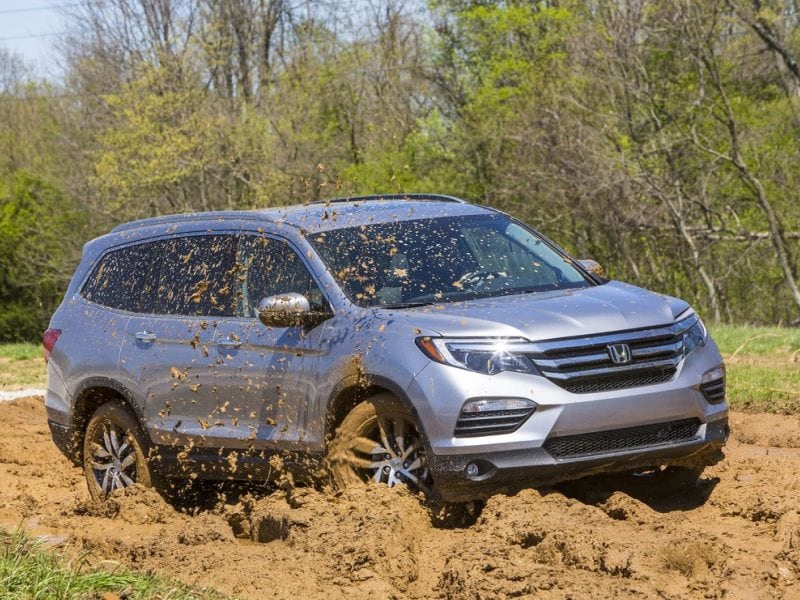
Final Thoughts
Whether it’s entirely fair, we approach every new Honda with the expectation of being impressed. Hey, they’re the ones that have been giving us impressively engineered machines all of these years—with each model besting the one it precedes.
Still, compared to its already outstanding prequels, the 2016 Honda Pilot is decidedly more refined, arguably better looking, and certainly more comfortable and finished more nicely than either of the two generations before it. What’s more, it’s offering a higher level of standard equipment at a minimal price bump, making it an even better value proposition than it was previously.
Yes, the new Elite trim is pushing fifty grand, especially when you fold in tax, title and destination, but it’s as close as you can get to a very nicely equipped Acura. Further, it bests many of its competitors when you factor in Honda’s reputation for quality and reliability.
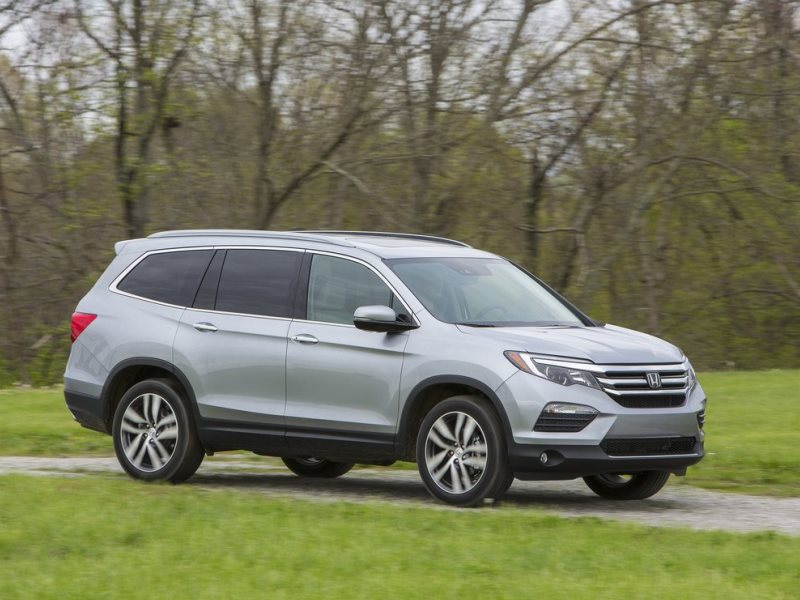
Pros & Cons
Exceptional comfort, beautifully finished inside and out, competitive fuel economy, advanced driver assistance technologies
Top trim level is a bit on the pricey side, no dials for the audio system with the eight-inch touchscreen, can look a bit like a tall minivan from some angles
